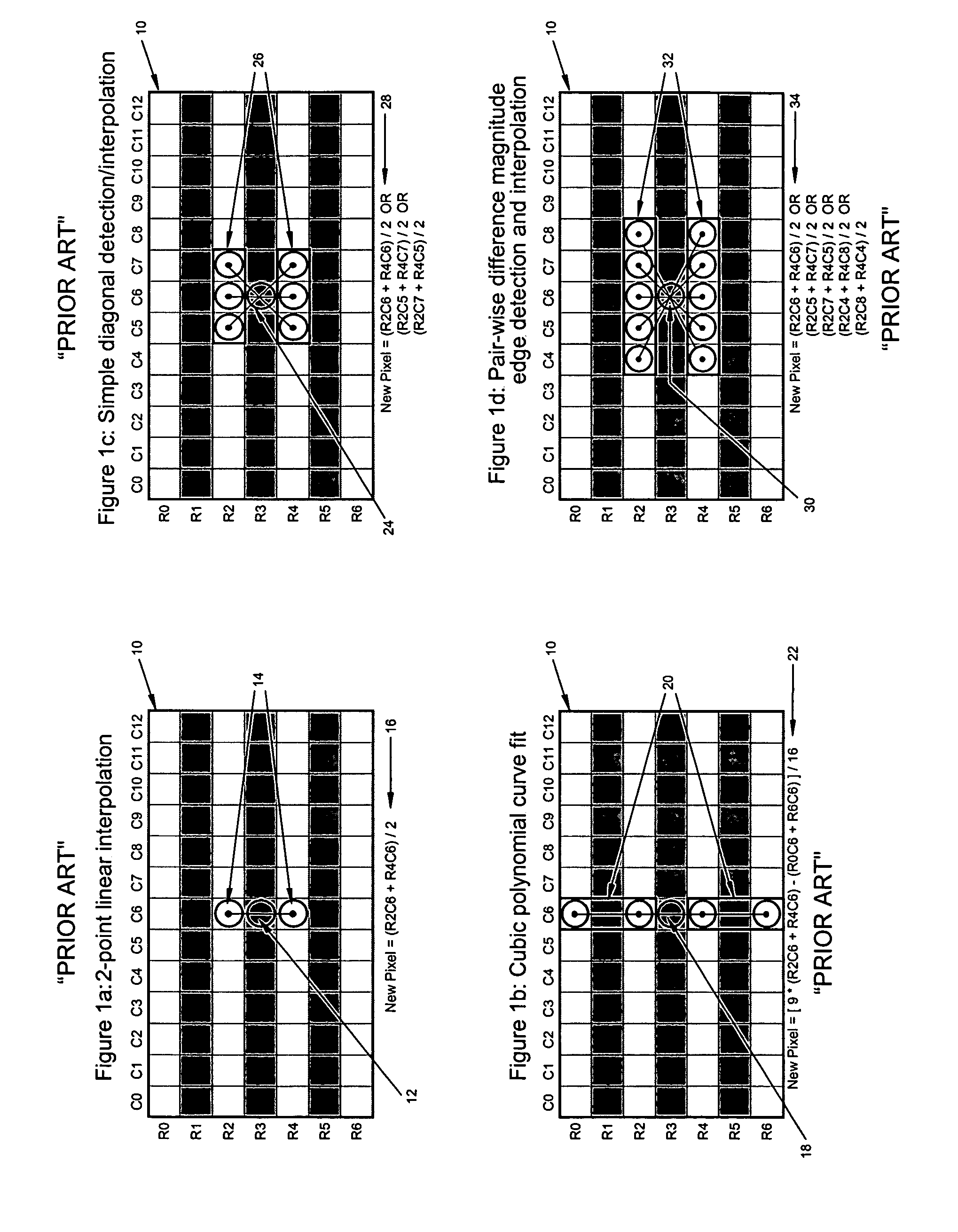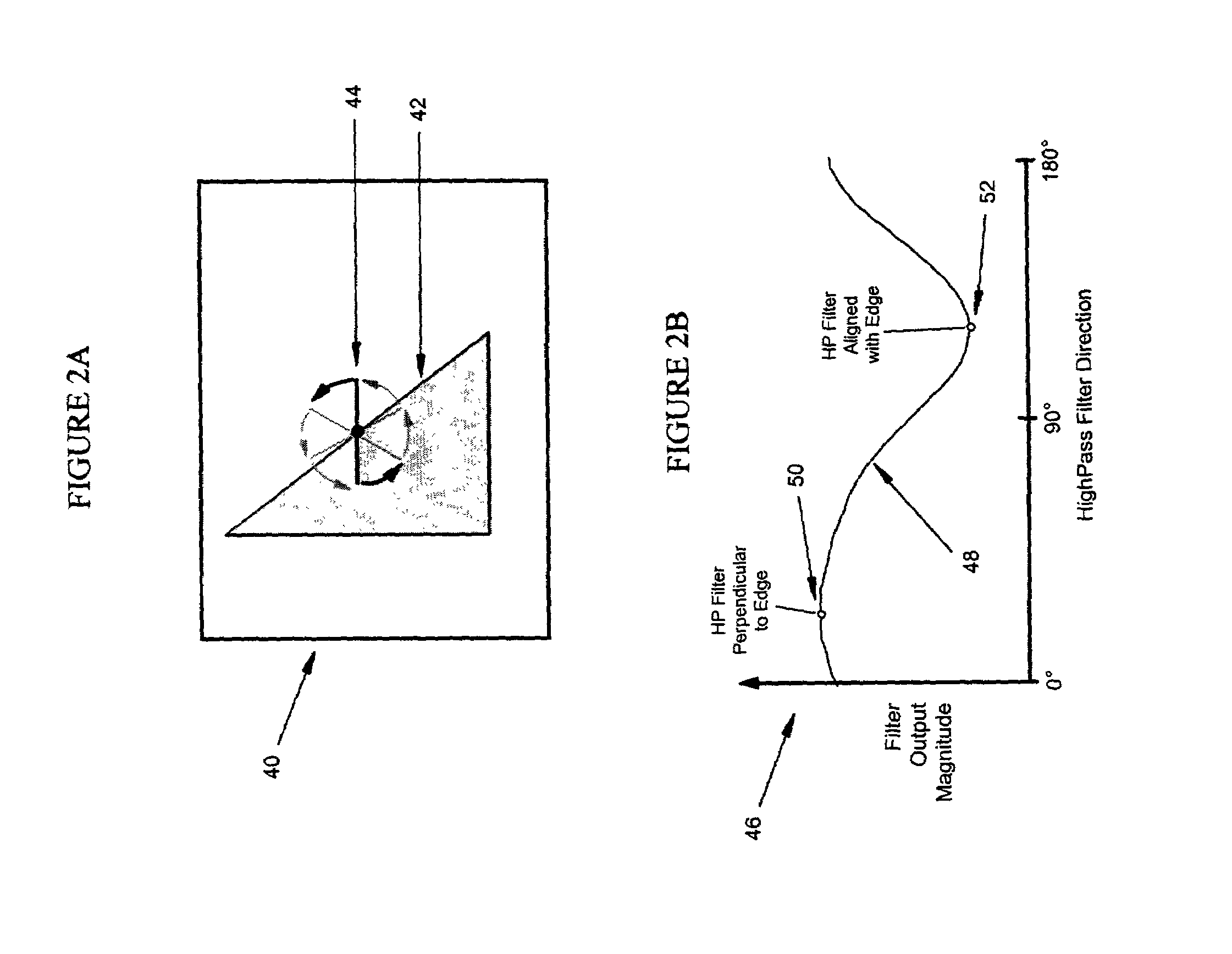Deinterlacing of video sources via image feature edge detection
- Summary
- Abstract
- Description
- Claims
- Application Information
AI Technical Summary
Benefits of technology
Problems solved by technology
Method used
Image
Examples
Embodiment Construction
[0033]A method and apparatus for interlace to progressive scan conversion based on the detection of edges in video image features and calculation of new pixels based on data along those edges is disclosed. In the following description, numerous specific details are set forth in order to provide a thorough understanding of the present invention. It will be understood however that the present invention may be practiced without some or all of these specific details. In other instances, well known process operations have not been described in detail in order not to unnecessarily obscure the present invention.
[0034]The present invention improves upon prior art techniques by detecting the presence and orientation of object edges in the image, and, where motion exists, utilizing the edge detection information to compute new pixels based upon pixel data along the object edge. The detection of edges utilizes a novel edge detection technique, different than that used in the prior art, which i...
PUM
 Login to View More
Login to View More Abstract
Description
Claims
Application Information
 Login to View More
Login to View More - R&D
- Intellectual Property
- Life Sciences
- Materials
- Tech Scout
- Unparalleled Data Quality
- Higher Quality Content
- 60% Fewer Hallucinations
Browse by: Latest US Patents, China's latest patents, Technical Efficacy Thesaurus, Application Domain, Technology Topic, Popular Technical Reports.
© 2025 PatSnap. All rights reserved.Legal|Privacy policy|Modern Slavery Act Transparency Statement|Sitemap|About US| Contact US: help@patsnap.com



